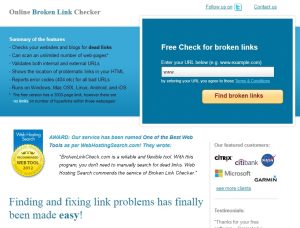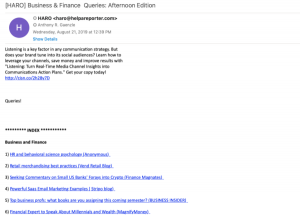
Organic search traffic is typically the largest referral source for every website, and it’s no different for ecommerce stores. Consumers prefer organic results because they perceive them to be more genuine and trustworthy (versus paid advertisements, which they know are trying to sell them something). The issue with organic results, however, is that they often don’t provide searchers with the right information or products they’re looking for. Unless, of course, you have an intentional SEO strategy behind your site to address on-site technical, structural and content items.
To create an intentional SEO strategy and take advantage of this high volume and quality traffic source, you must address a number of key on-site technical, structural and content items.
Following are 15 questions to ask yourself when it comes to optimizing your organic search performance.
1. Did you set up tracking and measurement tools?
Implementing Google Analytics, Google Search Console and Bing Webmaster Tools on your site will allow you to monitor and measure organic search traffic and on-site engagement.
Google Analytics provides the broader look at web traffic trends, and allows you to dig into organic search performance. Google Search Console and Bing Webmaster Tools allow you to identify errors, evaluate organic keyword and landing page performance, monitor backlinks, identify mobile friendliness issues, test structured data, submit your sitemap and keep an eye on other technical and structural items.

Google Search Console provides data and insights on organic search appearance, search traffic, index status and crawl issues.
2. Have you selected keywords?
Choosing the right keywords to place in pivotal site elements and throughout content is one of the most important things you can do to improve organic search performance. Choose keyword variations that have high search volume, lower competition and are directly relevant to your products and business.

Use Google’s Keyword Planner tool to find relevant keywords, and learn what terms have high search volume and lower competition.
3. Does each page have a unique title?
Every page should have a unique title that is 70 characters or less. For your homepage, product category pages and other static pages, use your top keywords to create unique page titles. Most ecommerce sites have hundreds if not thousands of products, making it difficult to write unique, keyword-rich titles. The most efficient way to handle product page titles is to use the product name as the page title.

Use this tool from Moz to test how your title will appear in search results.
4. Does each page have a unique meta description?
While meta descriptions don’t have a direct impact on your organic search position, they are instrumental in motivating users to click through to your website. Think of them as ad copy for your organic listings –– you want to ensure the description matches the content of the page, speaks to the searchers and contains a call to action.
Every page on your site should have a unique meta description that is no more than 150 characters long. The homepage and product category pages should be written specifically to address that page’s content and messaging.

Toms Shoes has written unique meta descriptions for each of their category pages, describing the types of products users will find when they click through.
For product pages, you can use the product description. Many ecommerce websites will use the exact description provided by the manufacturer to populate each product’s description. While this can be an efficient way to ensure each product contains content, it can lead to duplicate content issues. If you have hundreds or thousands of products, making it difficult to write unique descriptions for each, start first with your top selling products and those receiving the most organic traffic. Then chip away at the remaining product pages as time and resources allow.
5. Are you blocking unnecessary pages from being crawled?
Some pages on your site don’t make for good landing pages for organic searchers. Checkout pages, thank you pages, wishlists and pages 2+ of site search results are some of these pages. You can tell the search engines not to crawl and index these pages by using a Robots.txt file. Add “disallow” directives to the Robots.txt file to indicate that these pages should not be crawled, and then upload that file to your server.

This is what a Robots.txt file looks like when tested through Google Search Console. Note the types of pages that are being blocked–account pages, cart and checkout pages, internal search results, wishlists and more.
6. Do your subpages contain breadcrumb navigation?
Breadcrumb navigation is useful for both human visitors and search engine robots. It helps humans understand where they are within your site and allows them to easily navigate back to previous sub-categories pages. For search engines, it helps them to better understand site structure and related pages, and creates clean internal links.

Nordstrom includes breadcrumbs on all their subcategory pages.
7. Does your site have enough content?
Content can be a major challenge for ecommerce sites, but it’s one that must be addressed for improved organic visibility. Each page should have approximately 250 words of unique content to improve quality of site, increase keyword saturation and avoid duplicate content issues. How you approach content depends on the page:
Category Pages
Write unique content for each category page describing the types of products the user will find within that category. Highlight any differentiating aspects of your products, and weave in your brand messaging to ensure a consistent experience across each page.

1800Flowers includes unique copy on each product category and subcategory page.
Product Pages
As mentioned previously in the meta descriptions section, it can be difficult to write unique copy for each and every product, especially when you have thousands of products on your site. Tackle product descriptions in the same manner as meta descriptions –– start first with the top sellers and highest organic traffic drivers, then work your way through the remaining products.
8. How are you handling out of stock product pages?
For merchants with continually fluctuating inventory, it’s common to have products and even product categories that are no longer in stock. When these products go away, so do the product pages. This is a missed opportunity to continue building age and authority, however.
Keep these pages live and add a “temporary out of stock” notification if the product is likely to come back, a signup form to get notified when product is back and add links to related products or categories. If you do not plan to restock the product, you may consider redirecting the page to a similar product or related category. That way you’re keeping the value of the page, and still providing users a good experience.

ModCloth keeps out of stock product pages live, and encourages users to let them know if they should bring the product back.
9. Are you creating content for informational keywords?
Oftentimes a product page will rank for informational or educational type keywords (e.g., “how to set up wireless speakers” or “what shade is eggplant purple”), even when this exact phrase or information isn’t found on that page. This usually results in a high bounce rate because the searcher isn’t ready to buy yet. Without a clear way to find their answers, they leave immediately.
One way to capture this traffic and provide useful information is to create content for these “how to” and question keywords. This content can live on a blog, or in a “resource” section, “Learning Center” or FAQ pages.

The Home Depot has a large resource section with loads of instructional and inspirational content.
10. Do your URLs contain relevant keywords?
Including keywords in your URLs can help to improve organic visibility. This is especially important for category and subcategory pages.
It’s also important for page URLs to follow the same structure. For example, the URL for a pair of women’s tennis shoes may be: www.example.com/womens/sneakers/high-performance-white-tennis-shoe.
This helps to organize your site into neat categories for easier crawling and indexing, and can increase likelihood that your organic results will contain sitelinks.

Foot Locker’s well-organized site structure results in sitelinks within Google organic search.
11. Do you have reviews on product pages?
Including reviews and ratings on your product pages not only helps customers make more informed purchase decisions, it also helps to increase the quantity of content on these pages and can allow for organic visibility on new keywords. Additionally, you can add product review schema, which may lead to star ratings being included in search results, creating a richer and more eye catching organic listing.

Backcountry’s use of reviews and structured data has resulted in review snippets being added within their organic search listings.
12. How speedy is your site?
The time it takes for your site to load is an important factor in user experience and search engine visibility. If your site takes a long time to load, users will likely leave and go find another site that provides them with a better and faster experience. Also, if the search engines note that your site loads slowly, they’re likely to think that the site is not high quality, and thus they may not give it the visibility you hope for. Test your site speed here, and make any necessary changes as noted from the test.

13. Is your site mobile friendly?
The search engines also reward sites that are mobile friendly, giving them a “Mobile Friendly” label on mobile search results and a slight boost in ranking. Test how mobile friendly your site is here. If your site is responsive (as all BigCommerce sites are), you should pass the test with flying colors. If you don’t fare as well, make any necessary changes as noted from the test results.

14. How are customers using your internal site search?
Optimizing for internal search is just as important as optimizing for Google search. Track and analyze what terms customers are using on the search bar within your site. Note any misspellings, synonyms or abbreviations that may be causing errors in results or a poor experience. Fix any issues with search filters and usability to ensure users are finding the products they want in the quickest and easiest fashion.

Use Google Analytics to understand how customers use internal search, what keywords are used and how they navigate the site after searching.
15. Have you added canonical tags for filtered page views?
Most ecommerce sites allow you to filter product category pages or search results by size, price, rating, color, availability or other attributes. When a user filters results, a new page is often loaded with a parameter appended to the end of the URL (e.g., http://www.dickies.com/womens-clothing/womens-pants/?srule=price-low-to-high&sz=12&start=0).
To avoid duplicate content issues, you want to add canonical tags to these pages. All filtered views should reference the main category page as the “canonical” page. In the example above, http://www.dickies.com/womens-clothing/womens-pants/ is the canoncial page.

Dickies placed a canoncial tag on http://www.dickies.com/womens-clothing/womens-pants/?srule=price-low-to-high&sz=12&start=0 pointing to the category page as the main page.
By asking yourself these 15 questions, you can address the most common SEO issues that all ecommerce stores face, and work toward creating a better experience for organic search visitors and a better chance for organic search placement.
(60)










